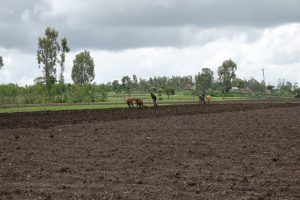ESSP Working Paper 111, by Kibrewossen Abay, Kalle Hirvonen, and Bart Minten
Abstract: A growing rural population combined with limited scope for further land expansion and slow movement out of agriculture means that average farm sizes are decreasing in Ethiopia. In this exploratory analysis, we study what this might mean for the food security and welfare of farming households. Using cross-sectional data for the Ethiopian highlands, we find – surprisingly – small differences between owners of small and large farms in key welfare and food security outcomes. For example, we find that a 20-percent increase in owned land area is associated with only a 0.7 percent increase in food consumption. Five adjustments are made by households residing on small farms to assure similar calorie intake as those residing on larger farms. First, they participate actively in land rental markets and, as a result, are able to double their cultivated land area, on average. Second, they compensate their small landholdings with other income sources, mainly livestock and non-farm businesses, permitting additional food purchases. Third, they cultivate their land more intensively, obtaining higher yields. Fourth, they favor more calorie-dense crops that are mostly used for own consumption. Fifth, they produce as well as consume cheaper food items. Download the PDF.
